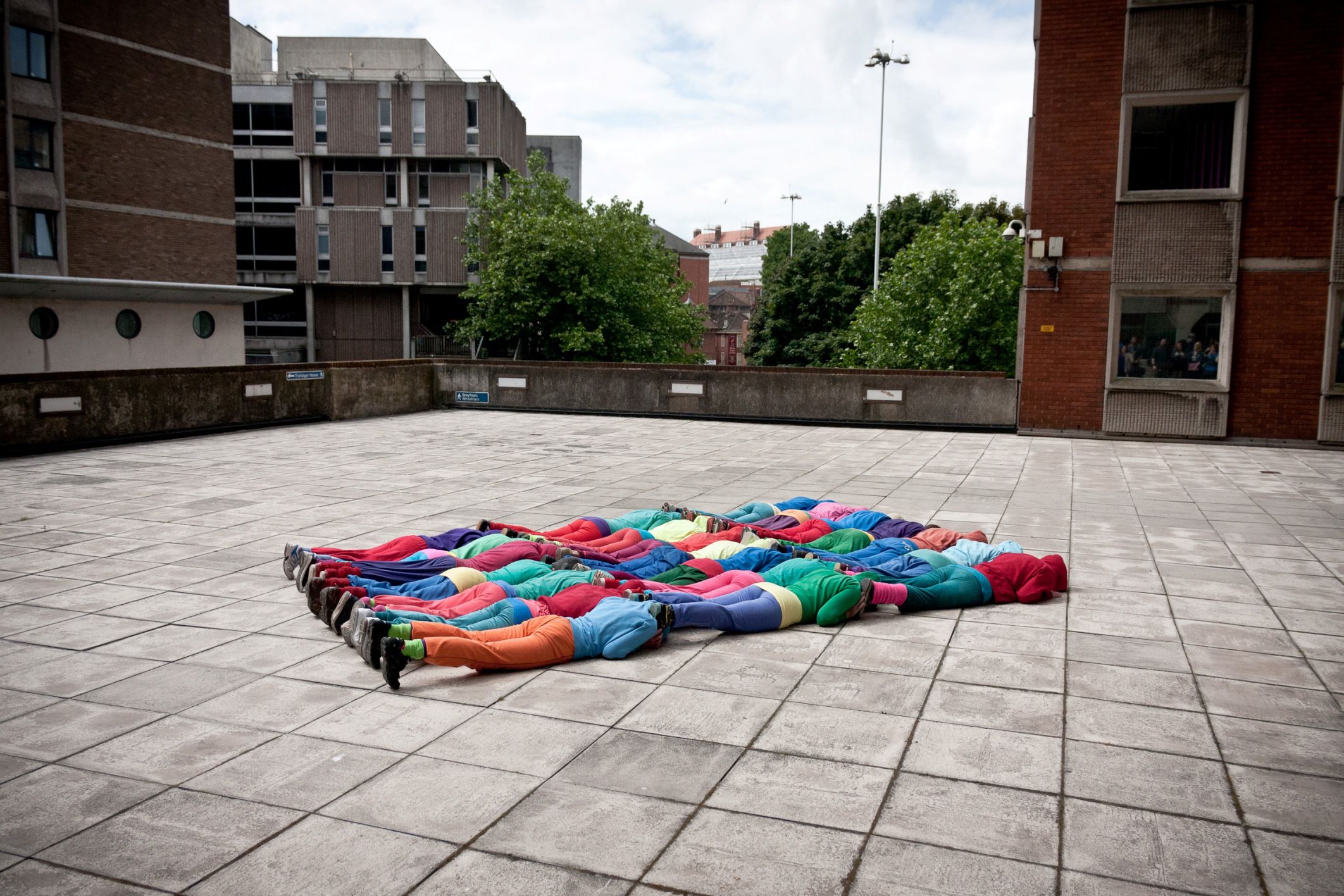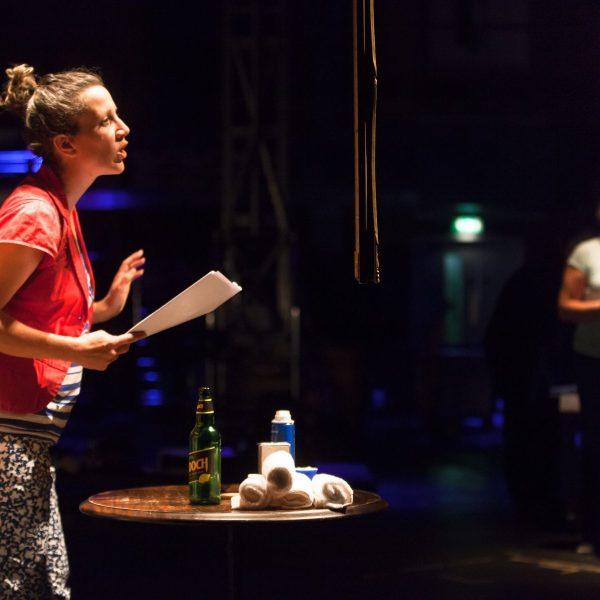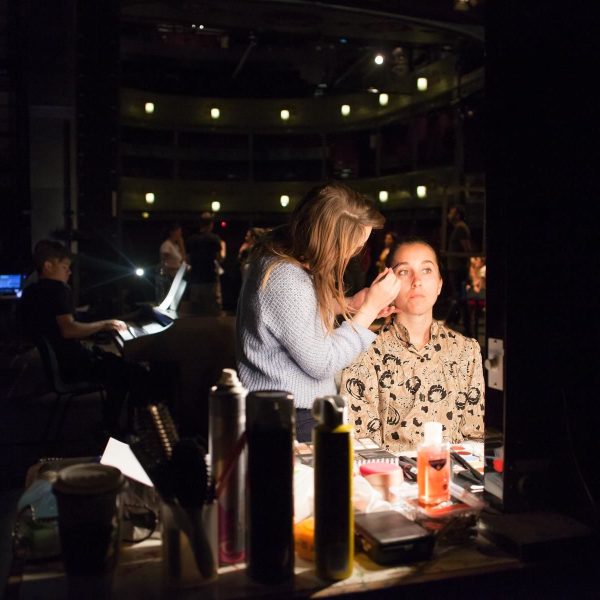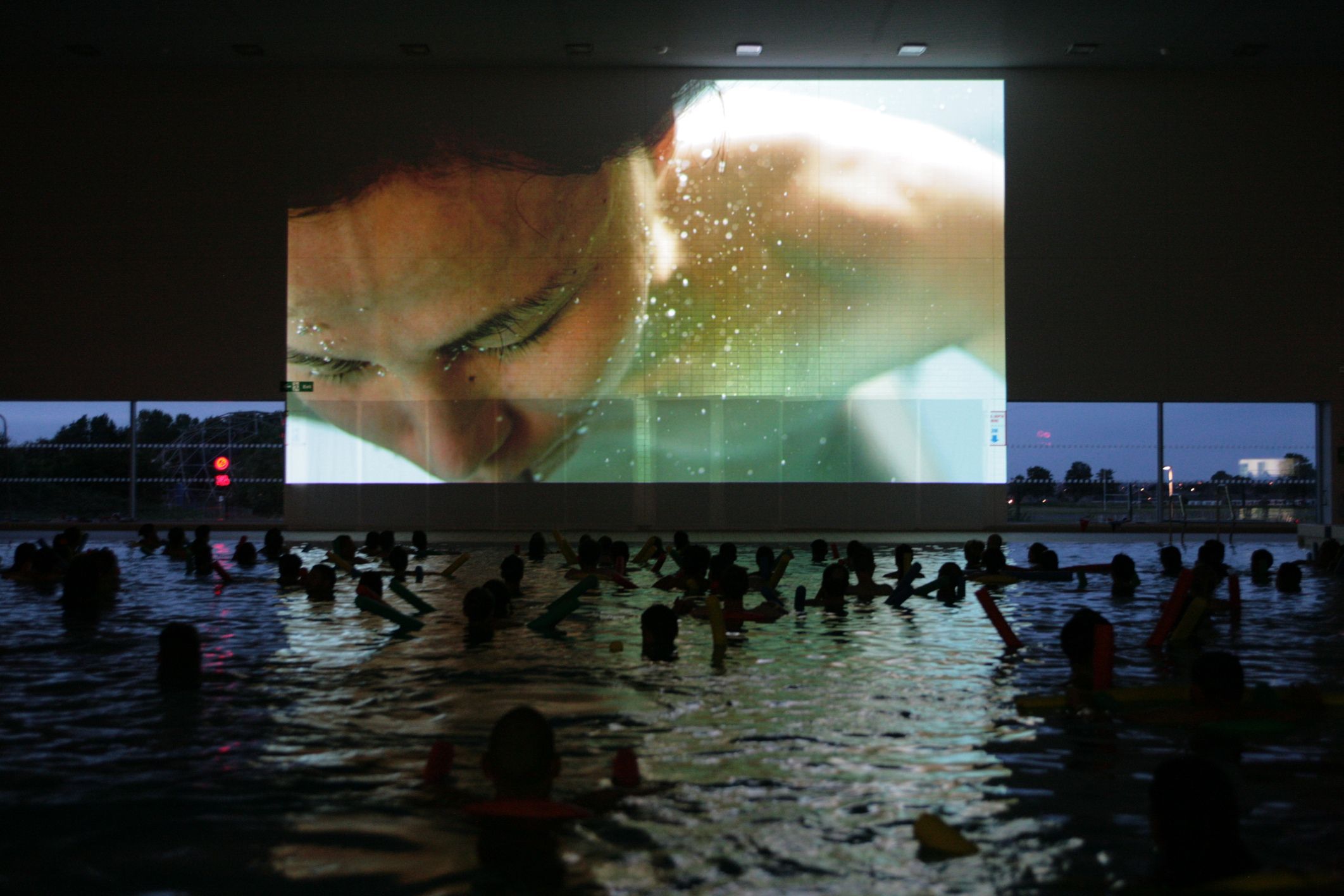
Synopsis
Rehearsal (Act 1) was an interactive rehearsal to create a unique playlet. The event invited the audience onto the stage to rehearse, direct and participate in a unique experiment to consider the possibilities for public rehearsal and audience participation. This work was a rehearsal for a rehearsal; an experiment into the possibility of rehearsal as a space of agency in which questions, histories, and behaviours can be addressed, posed and unfolded.


For this work members of the public were invited to join a full tech rehearsal on the theatre stage supported by a professional crew. Everyone present was simultaneously protagonist within and audience to the work, which unfolded through the decisions of the group. Commencing with script and set, all elements of the work were offered up to the public for alteration and direction with the final experience created being entirely specific to those that take part.
The script for this work was a contemporary adaptation of a real story from 1820 of a tragic relationship that led both parties to their deaths. The script is set in a house party and explores the nuances of non-physical violence in relation.
The script was developed together with writer Mike Akers as he produced the script for A Thousand Seasons Past. Emma Smith and Mike worked closely during the development of the wider project and this was a rare opportunity for members of the public to explore the themes of the drama on the Bristol Old Vic stage; it was open to all and the diverse range of participants added to the process. Rehearsal (Act I) created a space for public engagement and authorship over the final outcome in a supported environment.
A Thousand Seasons Past: Rehearsal (Act 1), is a temporary art work that was commissioned as part of the Wapping Wharf public art programme, a series of permanent and temporary art works funded by Umberslade as part of a public art obligation for the site. Further information on the Wapping Wharf arts programme can be seen on this website.
Emma Smith has a performance based social practice, creating public platforms for experimentation and research through site-specific actions, events and installations. Smith’s work explores human forms of connectivity, looking in particular at those that operate on a subconscious level through resonance, molecular activity, energetics and tacit behaviour.
Smith’s working process is research and production based and often involves the bringing together of multi-disciplinary teams including academics, professionals and hobbyists, using the gallery space as an active laboratory for experimentation and collective action.
Working with the format of rehearsal and public participation, Smith creates ephemeral experiences particular to those who are there, as well as props and games for non-durational performance to be activated at any time. Often site specific, her work investigates local historic behaviours in relation to the present, collapsing notions of time to challenge sedentary notions of place relation, considering how we might all relate to any place at any time through transitory modes of belonging and practices of place being.
Ginkgo Projects is an independent consultancy offering art curation and commissioning services to a wide range of clients.
Our philosophy is driven by a desire to create unique opportunities for artists and designers. We aim to contribute fresh perspectives to built and natural environments that challenge assumptions about the spaces we inhabit.
Our clients include developers, local authorities, landscape and architectural practices and environmental and arts organisations. We create real opportunities for clients and artists to produce innovative work appropriate to the context, whether this is a new building or public space, work that is integrated into a space, stand-alone work or exhibition.
Umberslade is a leading property development, management and investment business with a focus on the UK.
A family-owned company founded over 20 years ago, we have a track record of success and many years of combined knowledge across the residential, industrial, retail and commercial sectors.
We pride ourselves on our ability to identify opportunities and transform them into high quality places for people to live, work and enjoy life. Our project portfolio encompasses both the development of land to create new builds and the restoration and renovation of existing buildings.
Often buying complex sites or assets without planning consent, we use our knowledge of the planning process and technical expertise to exceed expectations.
Taking on developments ourselves or working with a joint venture partner, we maintain an ethos focused on quality and attention to detail.
Bristol Old Vic is the longest continuously-running theatre in the UK and following a recent £12million redevelopment project, is now one of the most modern and comfortable with state of the art rehearsal rooms, a dramatically extended forestage and precision-engineered sightlines giving audiences an even more intimate theatrical experience.
Our mission is to create pioneering twenty-first century theatre in partnership with the people of our energetic city; inspired by the history and magical design of the most beautiful playhouse in the country.
We are led by artists who see the world with distinctive clarity and whose ability to articulate what they see allows us to understand and engage with our world afresh, whether that be through our 350-strong Young Company, our many outreach and education projects or helping ascendant artists by nurturing the spark or seed of an idea into something fully-formed.
We are publicly funded by Arts Council England and Bristol City Council, using that investment to support experiment and innovation, to allow access to our programme for people who would not otherwise encounter it or be able to afford it and to keep our extraordinary heritage alive and animated.
We strive to be welcoming, professional and boundlessly curious; playful, ambitious and rigorous; resourceful, honest, and generous; collaborative, Bristolian and world class!








